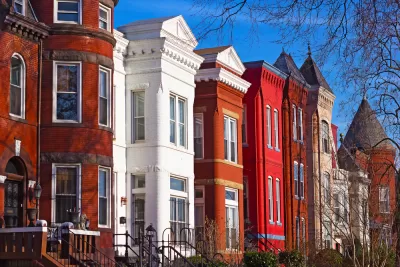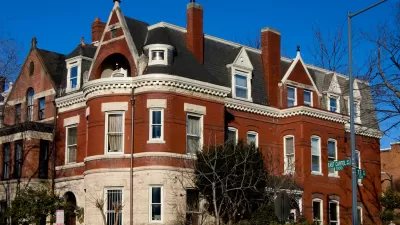David Alpert argues for a more rigorous definition for what is not historic. Without one, developers and property owners have no way to know what buildings can't or won't be given the designation.

Washington, D.C.'s Historic Preservation Office (HPO) has documented what makes a building historic, but they haven't done much to clarify what makes a building "not historic." To David Alpert, that's a problem. "It's clear that sometimes, the motivation of those seeking landmark protection is more about blocking development than honoring history," Alpert writes in Greater Greater Washington.
While Alpert concedes that preservation has a place in making a vital city, he worries that by not setting a floor, the HPO creates ambiguity for developers and may slow building. "A broader concern, with so many landmark applications and especially so many in exclusionary Tenleytown, is that almost any building tells the story of something," Alpert argues. Some buildings that were submitted for a historic designation were rejected, but there are so few that it's hard to know what the floor is for the consideration.
FULL STORY: Is anything old not “historic”? Preservation doesn’t have a good answer

Study: Maui’s Plan to Convert Vacation Rentals to Long-Term Housing Could Cause Nearly $1 Billion Economic Loss
The plan would reduce visitor accommodation by 25,% resulting in 1,900 jobs lost.

North Texas Transit Leaders Tout Benefits of TOD for Growing Region
At a summit focused on transit-oriented development, policymakers discussed how North Texas’ expanded light rail system can serve as a tool for economic growth.

Why Should We Subsidize Public Transportation?
Many public transit agencies face financial stress due to rising costs, declining fare revenue, and declining subsidies. Transit advocates must provide a strong business case for increasing public transit funding.

How to Make US Trains Faster
Changes to boarding platforms and a switch to electric trains could improve U.S. passenger rail service without the added cost of high-speed rail.

Columbia’s Revitalized ‘Loop’ Is a Hub for Local Entrepreneurs
A focus on small businesses is helping a commercial corridor in Columbia, Missouri thrive.

Invasive Insect Threatens Minnesota’s Ash Forests
The Emerald Ash Borer is a rapidly spreading invasive pest threatening Minnesota’s ash trees, and homeowners are encouraged to plant diverse replacement species, avoid moving ash firewood, and monitor for signs of infestation.
Urban Design for Planners 1: Software Tools
This six-course series explores essential urban design concepts using open source software and equips planners with the tools they need to participate fully in the urban design process.
Planning for Universal Design
Learn the tools for implementing Universal Design in planning regulations.
City of Santa Clarita
Ascent Environmental
Institute for Housing and Urban Development Studies (IHS)
City of Grandview
Harvard GSD Executive Education
Toledo-Lucas County Plan Commissions
Salt Lake City
NYU Wagner Graduate School of Public Service





























